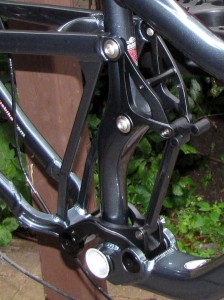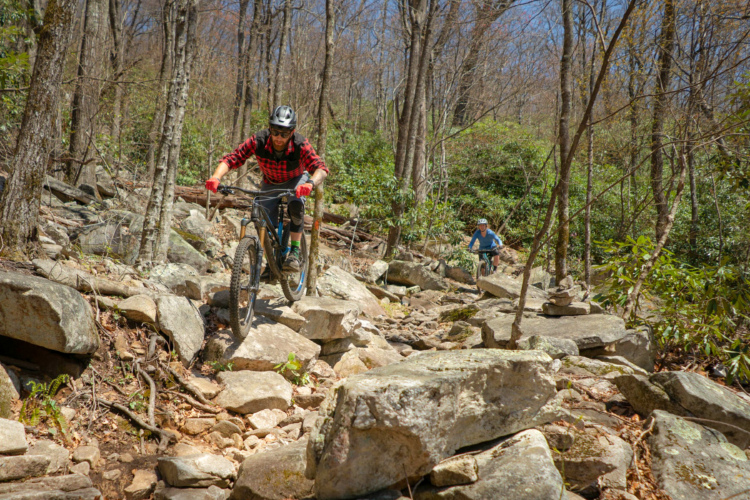Alas, all good things come to an end. After two and a half years of serious bashing and pushing my Opus Maadh to its limits, the bike started showing signs of its final days. So before I got stuck, the good folks at Opus sent me the Maadh’s replacement: the Opus Clutch 1.
At this point you might be wondering how I knew the frame was nearing its end and how you might identify the same signs on your bike. Assuming that you haven’t smashed your bike up badly and haven’t bent the crap outta it, you may not see any visible signs but you can tell in other ways. On my frame, the early warning signs came via excessive noise from the suspension. The creaking noise was most noticeable when I was hammering on the pedals.
Taking the bike apart the first time there was no visible damage but I did notice uneven wear on pivot spacers and such (which is a good warning and may itself generate noise). I cleaned the pivots up, making sure that they were still parallel and within spec and I looked at the pivot bearings where I didn’t find any issues (I had exchanged a lower pivot that was worn away earlier this year).
I put the bike back together, re-torqued all the bolts, and took the bike back out for a ride. The bike seemed to get better and rode great once again for a little while but after a few more rides at Kelso, Hydrocut and Three Stages in Collingwood, the noise was even louder than before. Taking a closer look I finally saw the problem: fatigue cracks. Yup, it happens and this is why I’m writing this article, focusing on how to identify problems but most importantly, how to deal with warranty issues.
I recommend totally cleaning and inspecting your bike every so often (especially after a major crash) for cracking or any abnormal behavior. For example, one of my good friends and riding buddies was experiencing a nasty creak when the rear suspension on his Santa Cruz Blur LT went through its motions. The bike was also ghost shifting from time to time which was strange. Taking a closer look at home I found there were two cracked bearings in the lower pivot. The cracked bearing ran out of grease (making the noise) and the cracks allowed the rear triangle to shift around a bit and slightly twist (accounting for some of the ghost shifting). Well in his case all it took was a complete bearing and bushing kit (about $100) and he was good to go. Another good friend of mine had a Rocky Mountain Slayer that wanted to do its own thing while he pedaled away. Well that one had bushing issues (an item which, like the Blur issue, is considered wear and tear, not covered under warranty). About $20 dollars later and he was good to go.
My new Opus Clutch 1
The Clutch 1 frameset is the replacement for the Maadh in Opus’s line up for 2010 and 2011. With 150mm of rear travel using a floating pivot point arrangement, the frame is made from 7005-T6 triple-butted hydro-formed tubing, same as the old Maadh. But that’s where the similarities end. First, and most importantly, the Clutch seat tube is a smoother, less manipulated affair with fewer welds (where cracks can form). Along with the improved and cleaner looking seat tube, the rear triangle was reconfigured for even more tire clearance. If you put the two frames side by side you also notice that the down tube has been flared wider at the bottom bracket for an stiffer, more responsive pedal stroke. I also noticed that the folks at Opus did away with the unique “C’ style plastic clamp used to hold down the shifting / brake hose on the down tube. Now the frame uses regular tie wraps that can be easily sourced whenever needed.
So it’s kinda funny how things pan out. It was great heading to Interbike with a brand new frameset at home waiting to be tricked out with the latest components. Mad props to the guys at Opus for sending down the new frame so quickly and taking care of me. Once the bike is built up and ready I will give you all the low down on the build and more importantly, a review on how it handles.













1 Comments
Oct 21, 2010